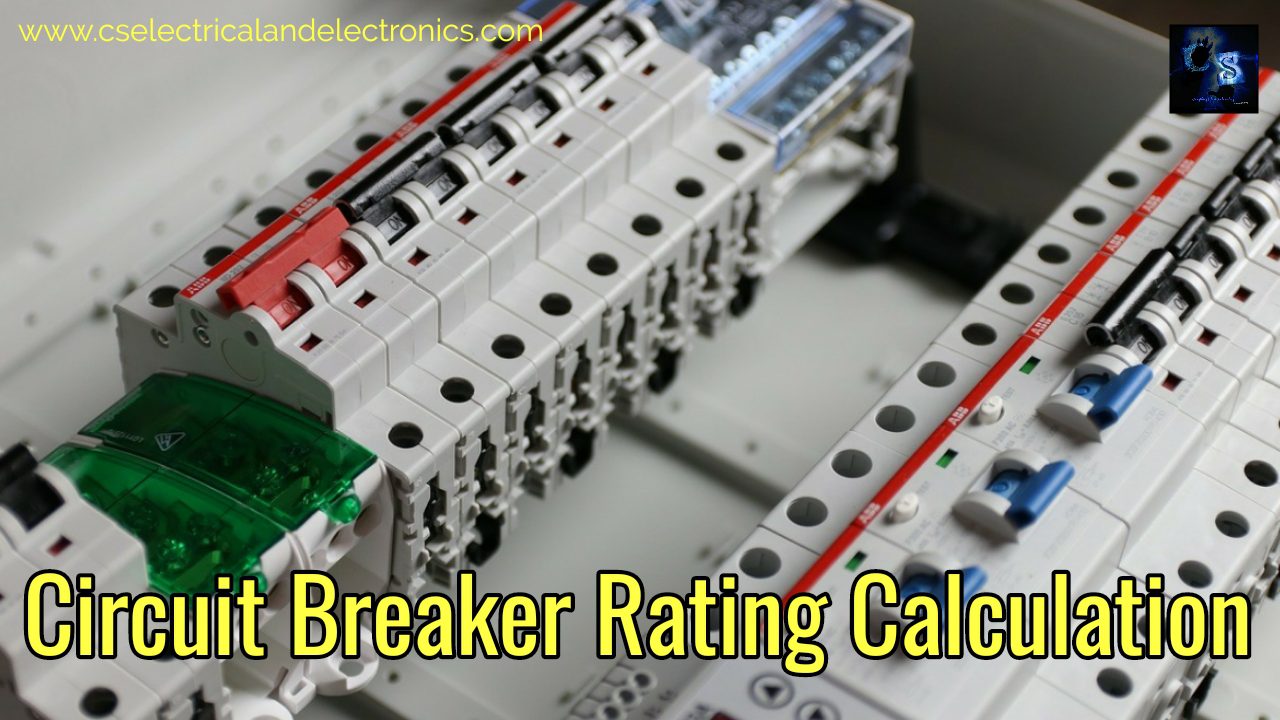Circuit Breaker Rating Calculation
Hello guys, welcome back to my blog. In this article, I will discuss how to circuit breaker rating calculation for loads. For lighting loads, heating loads, three-phase loads circuit breaker. I will try to explain in an easy way and I will share a very easy method to calculate the rating of the circuit breaker.
You can also catch me @ Instagram – Click Here. If you want an article on some other topics then comment us below in the comment section.
Also read – The Future Scope Of Battery Management Engineers.
Circuit Breaker Rating Calculation
Nowadays circuit breaker plays a very important role in protection. The circuit breakers are used to interrupt or isolate the circuit under short circuit and overload conditions. Many electricians face problems while doing house wiring they don’t understand which type of rating of the circuit breaker is suitable for the home, in some cases they use different ratings of circuit breaker which makes problems in the future.
Selecting a proper rating of the circuit breaker is very important because if any fault occurs then the circuit breaker will trip immediately. For the lighting circuits, 5 to 6 amps rating wires are used if the electrician connects 15 amps circuit breaker in series then the circuit breaker will not trip if 8 to 10 overload current flows through the wire, which causes burning of wires.
First I will explain for a single-phase, then I will how to calculate for a three-phase load.
Circuit Breaker Rating Calculation For Single Phase
In a single-phase, I will show you how to calculate a current rating for the circuit breaker for both lighting circuits and heating circuits. What are the lighting circuit and heating circuit? The lighting loads means fans, lights, TV which are connected to lighting circuit and for the heating circuit, heaters, washing machines, etc are connected.
The appliances which consume more power are connected to the heating circuit. For the heating circuit, a separate circuit is made.
For Lighting Circuit
Assume, your house has some loads like four tube lights of 40 watts, two ceiling fans of 80 watts, and some other loads consider 400 watts. Now first calculate the total connected load of the house. We will ignore the power factor, you can also consider the power factor as 0.8, but I will ignore the power factor.
Total load = (4*40) + (2*80) + 400 = 160 + 160 + 400 = 720 watts.
Single-phase voltage = 230 volts
The factor of safety = 1.25 ( For future demand)
Current = Total load / Voltage
= 720 / 230 = 3.13 Amps * 1.25 (safety)
= 3.9125 Amps
The circuit breaker rating to be used is 5 amps because 3.9125 amps circuit breaker is not available in the market. For lighting circuit, 5 amps circuit breaker is to be used.
For Heating Circuit
Assume, your house has some loads like heater(1000 watts), washing machine(1000 watts), fridge(1000 watts), etc which are connected to the heating circuit. Now first calculate the total connected load of the house.
Total load = 1000 + 1000 + 1000 = 3000 watts.
Single-phase voltage = 230 volts
The factor of safety = 1.25 ( For future demand)
Current = Total load / Voltage
= 3000 / 230 = 13,04 Amps * 1.25
= 16.30 Amps
The circuit breaker for the heating circuit should be of 16 Amps rating. The 16 Amps circuit breaker is available in the market.
Circuit Breaker Rating Calculation For Three Phase
Everything is the same only the formula for three-phase is different. P = Root three * V * I.
Total load = 40 KW
Power Factor = 0.8
Voltage = 440 volts
Convert KW to KVA.
KVA = KW / pf = (40 * 1000) / 0.8
= 50 KVA
Current = Connected load / ( Root Three * Voltage)
= 50,000 / ( 1.73 * 440) = 65.68 Amps
Current = 65.68 * 1.25 (factor of safety)
= 82.1 Amps
Therefore, the circuit breaker of 100 Amps should be used because 82.1 Amps circuit breaker is not available in the market.
I hope this article may help you all a lot. Thank you for reading.
Tags: Circuit Breaker Rating Calculation, How To Find Proper Circuit Breaker, What Is Circuit Breaker.
Also, read:
- Automotive HPC Wars: The Race To Power Software-Defined Vehicles
- Why The Automotive Industry Is Down: No Automotive Jobs and When Will It Become Normal Again?
- Lane Departure Warning Systems: Your Guardian on the Road
- In-Depth Guide To UDS Service 0x19 – ReadDTCInformation
- Testing Techniques For Test Case Writing in the Automotive Domain

